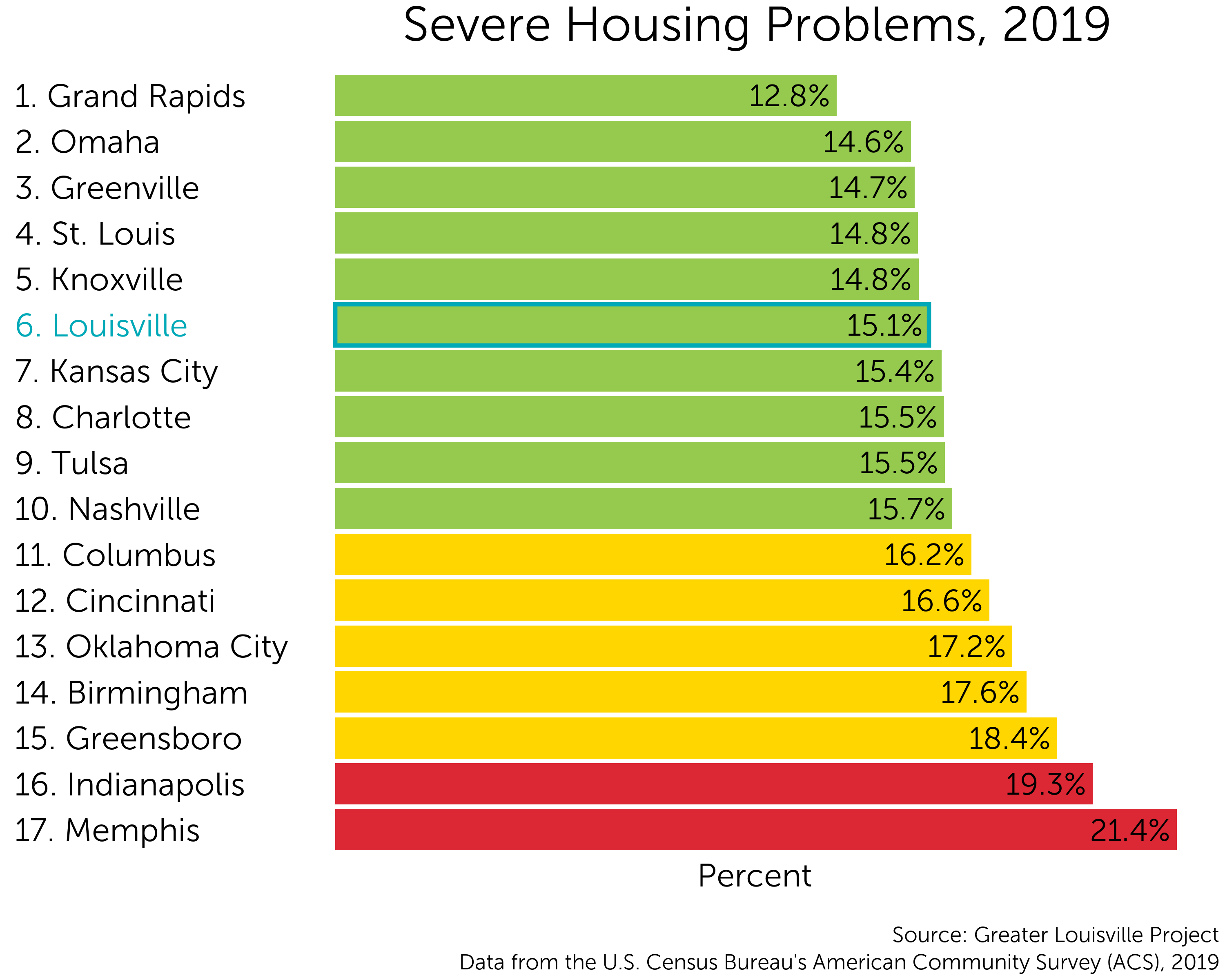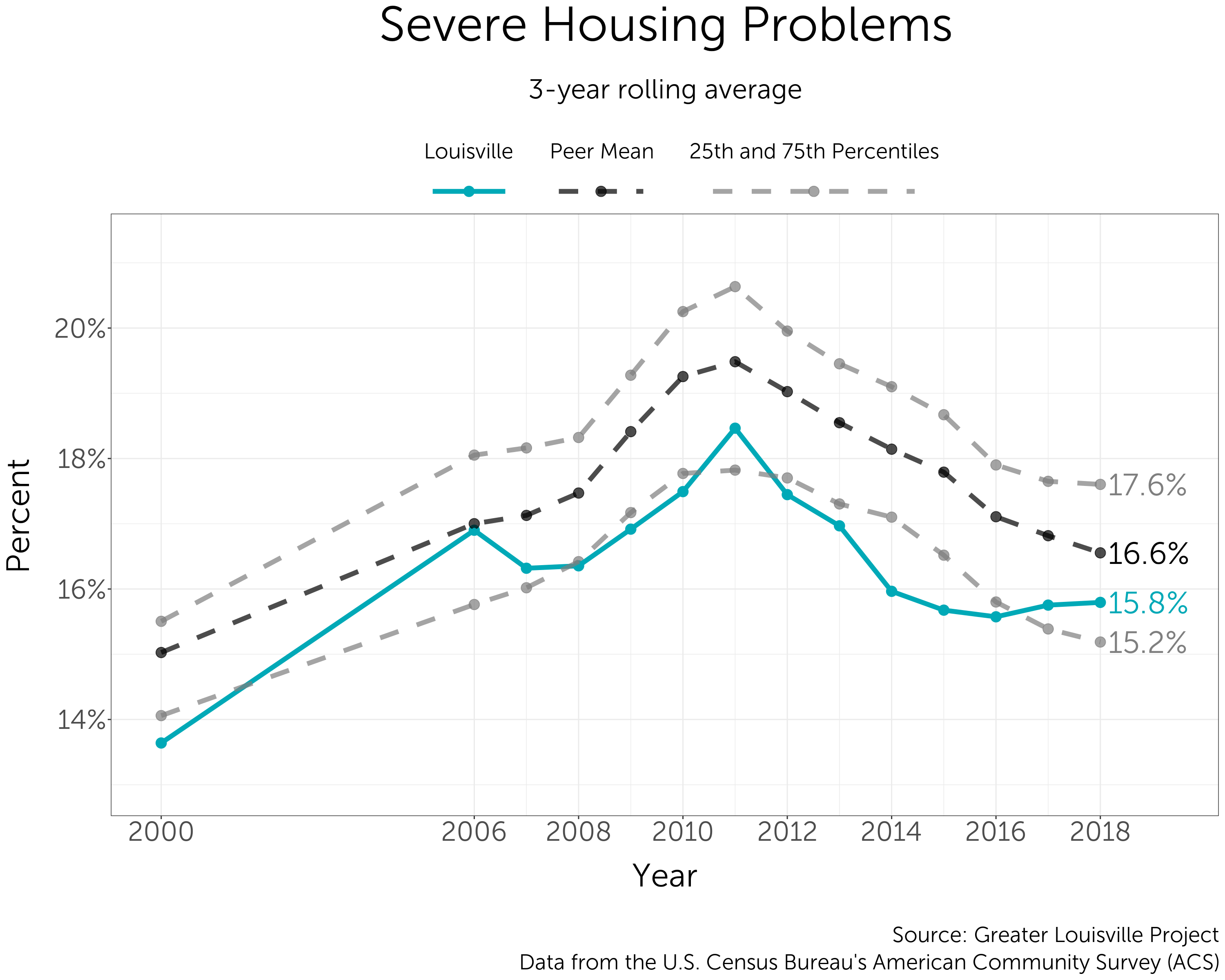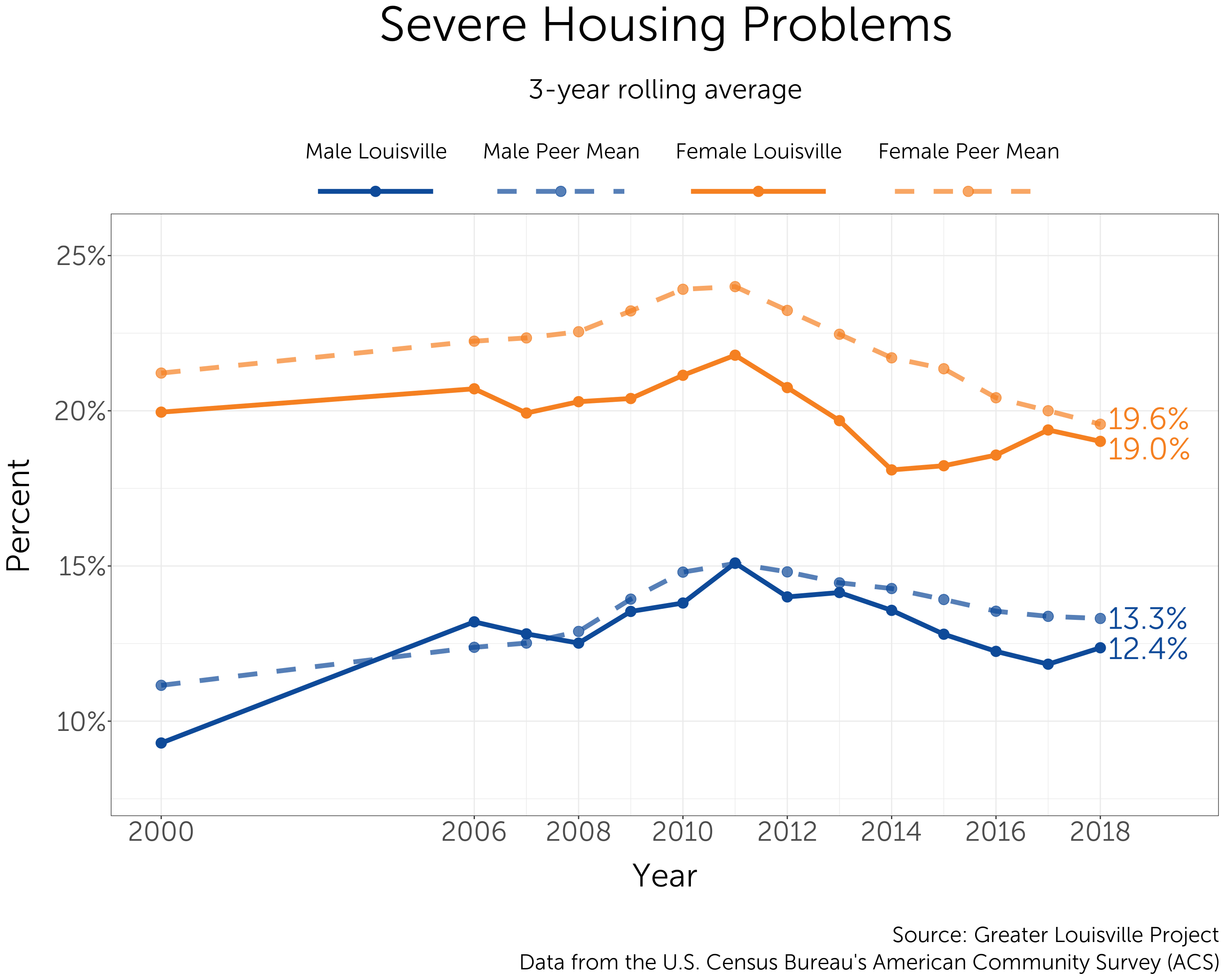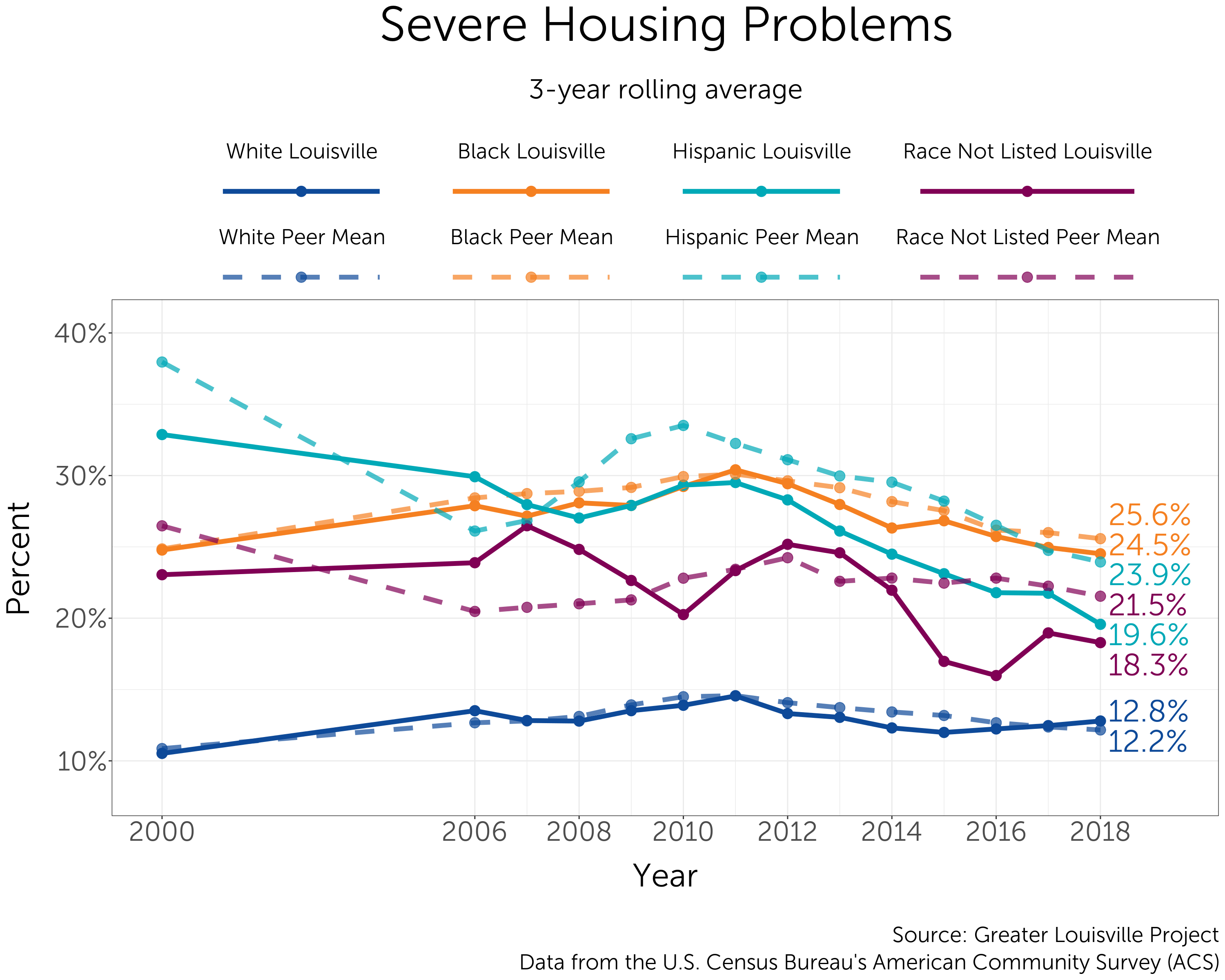Severe Housing Problems
Housing is a critical need for all individuals, and affordable housing is a good indicator of the job market and access to quality jobs within a community. Overcrowding, poor facilities, and homelessness exacerbate the experience of multidimensional poverty and increase risks for disease, depression, and transient housing experience. Ultimately, severe housing problems can lead to homelessness and increased housing vacancies, which can result in an increased economic burden on a community and a decreased quality of life for those affected.





